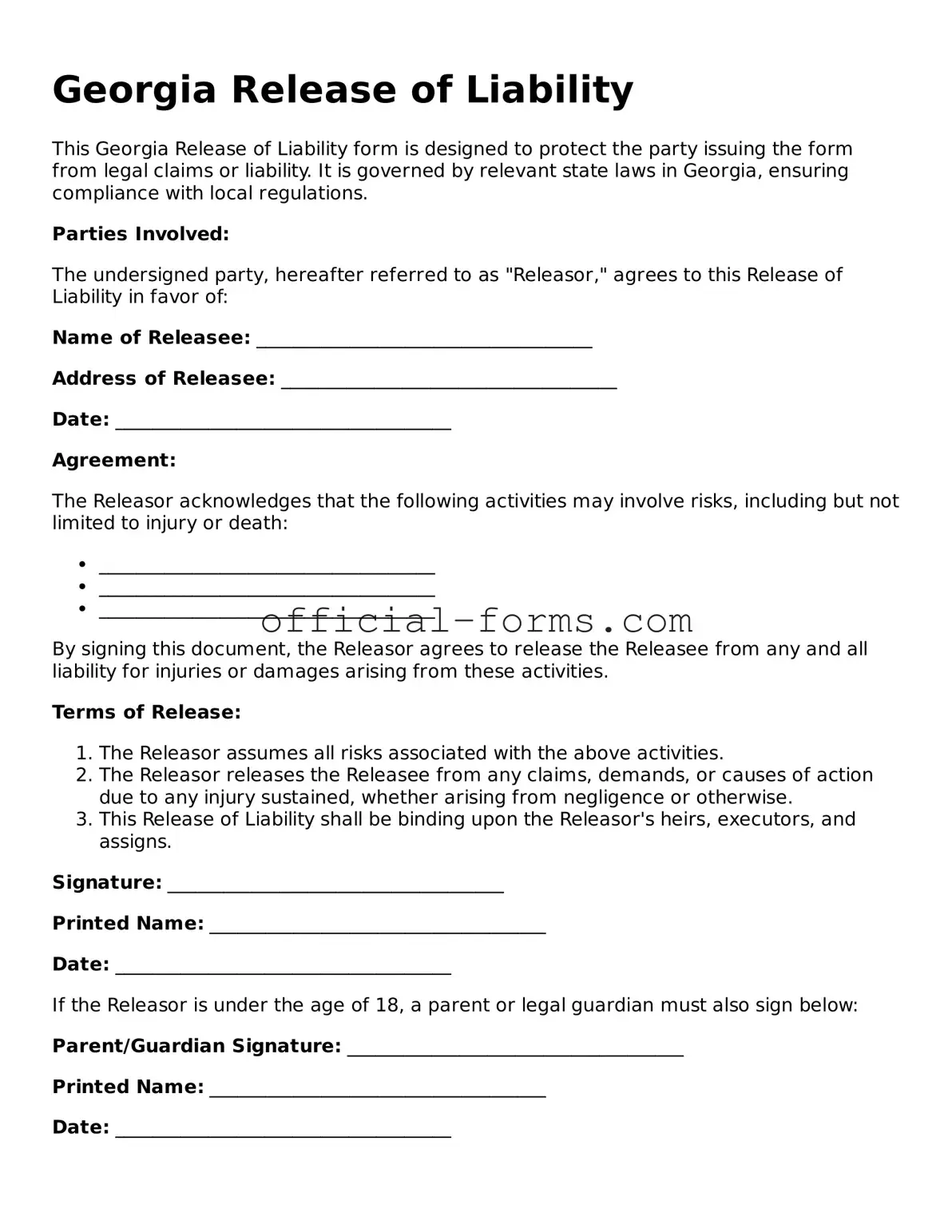Filling out the Georgia Release of Liability form is a critical step for individuals participating in activities that carry inherent risks. However, many people make common mistakes that can undermine the effectiveness of the document. Understanding these errors can help ensure that the release serves its intended purpose.
One frequent mistake is failing to read the entire form before signing. Many individuals skim through the document, overlooking important clauses that outline their rights and responsibilities. This can lead to misunderstandings about what is being waived and could result in unintended liability.
Another common error involves incomplete information. It is essential to fill in all required fields accurately. Omitting details such as names, dates, or specific activities can render the form invalid. Incomplete forms may not provide the necessary legal protection and can complicate matters in the event of an incident.
People often neglect to understand the implications of the release. A Release of Liability is not merely a formality; it is a legal document that can significantly affect one's rights. Individuals should consider consulting with a legal expert to grasp the full scope of what they are agreeing to before signing.
Additionally, not using clear language can lead to ambiguity. When filling out the form, it is crucial to use precise terms and avoid vague descriptions of activities. Ambiguity can lead to disputes over the interpretation of the document, potentially undermining its effectiveness.
Another mistake is failing to date the form. The date is vital for establishing the timeline of the agreement. Without a date, it can be challenging to determine when the release was signed, which may be important in legal contexts.
Some individuals also overlook the necessity of having witnesses or notarization. Depending on the context, having a witness or notarizing the document can enhance its credibility and enforceability. Ignoring this step can weaken the release's legal standing.
Finally, not keeping a copy of the signed form can lead to complications. It is advisable for individuals to retain a copy for their records. This ensures that they have access to the terms of the release if questions arise in the future.
By being aware of these common mistakes, individuals can take proactive steps to ensure that their Georgia Release of Liability form is completed correctly and effectively protects their interests.
